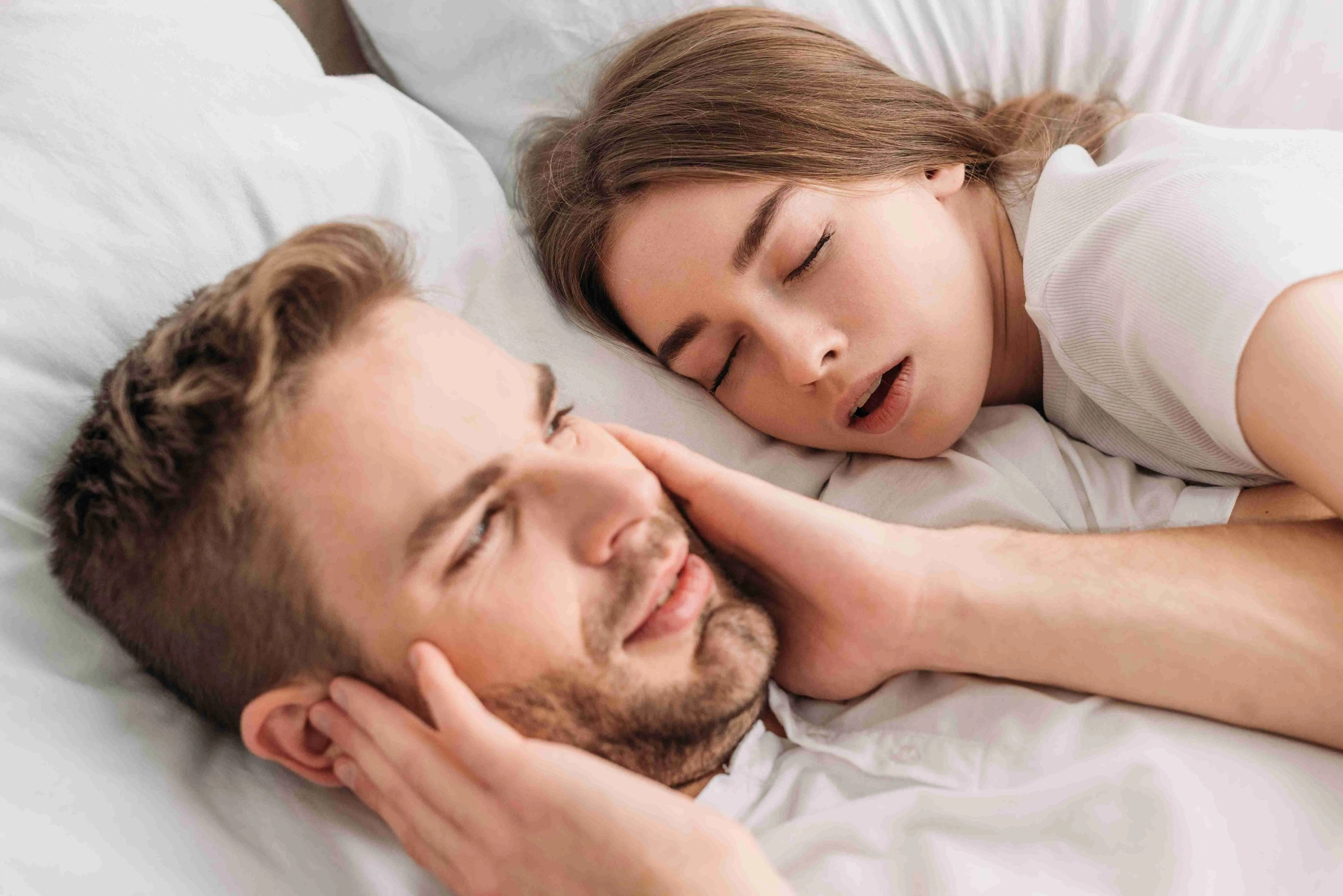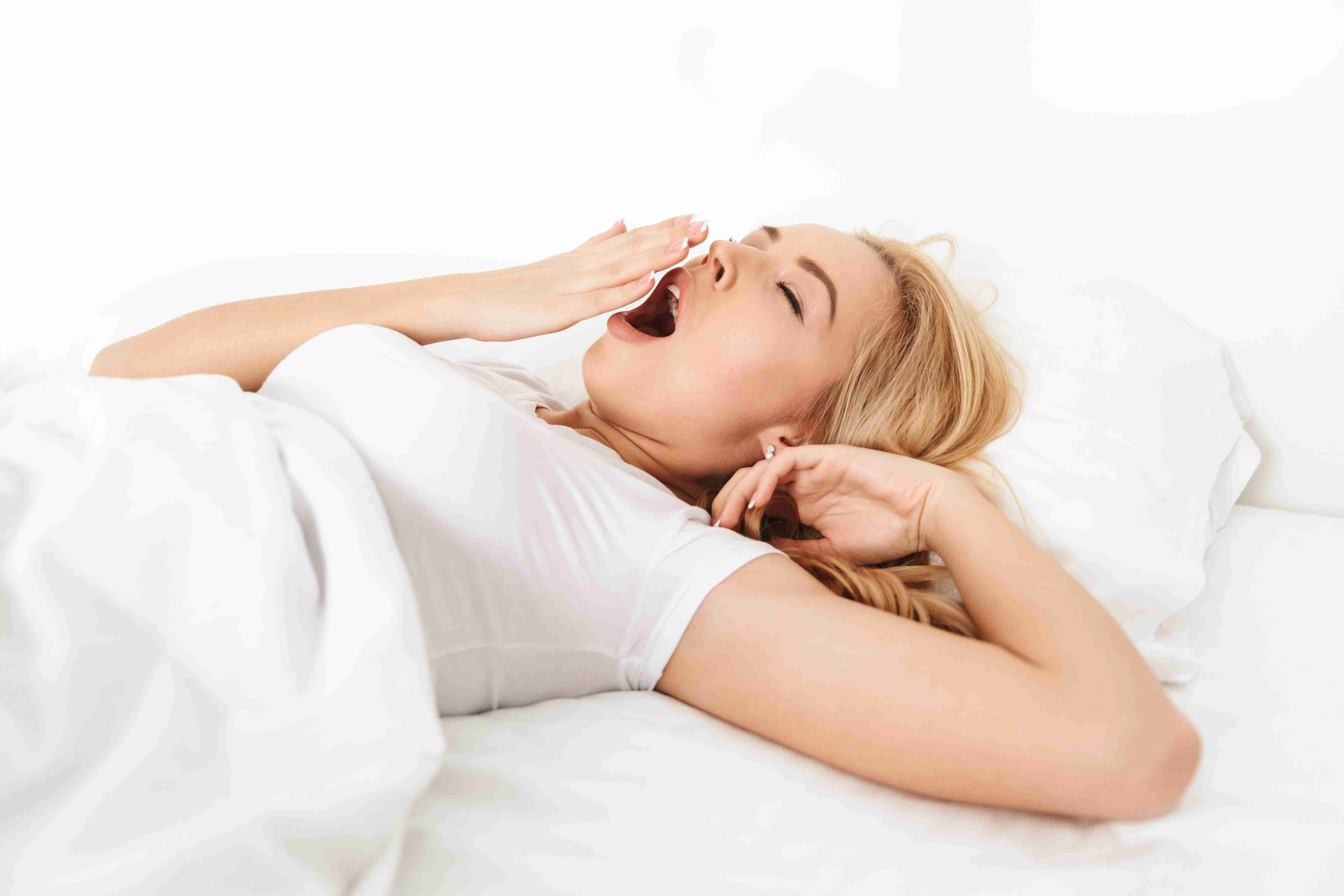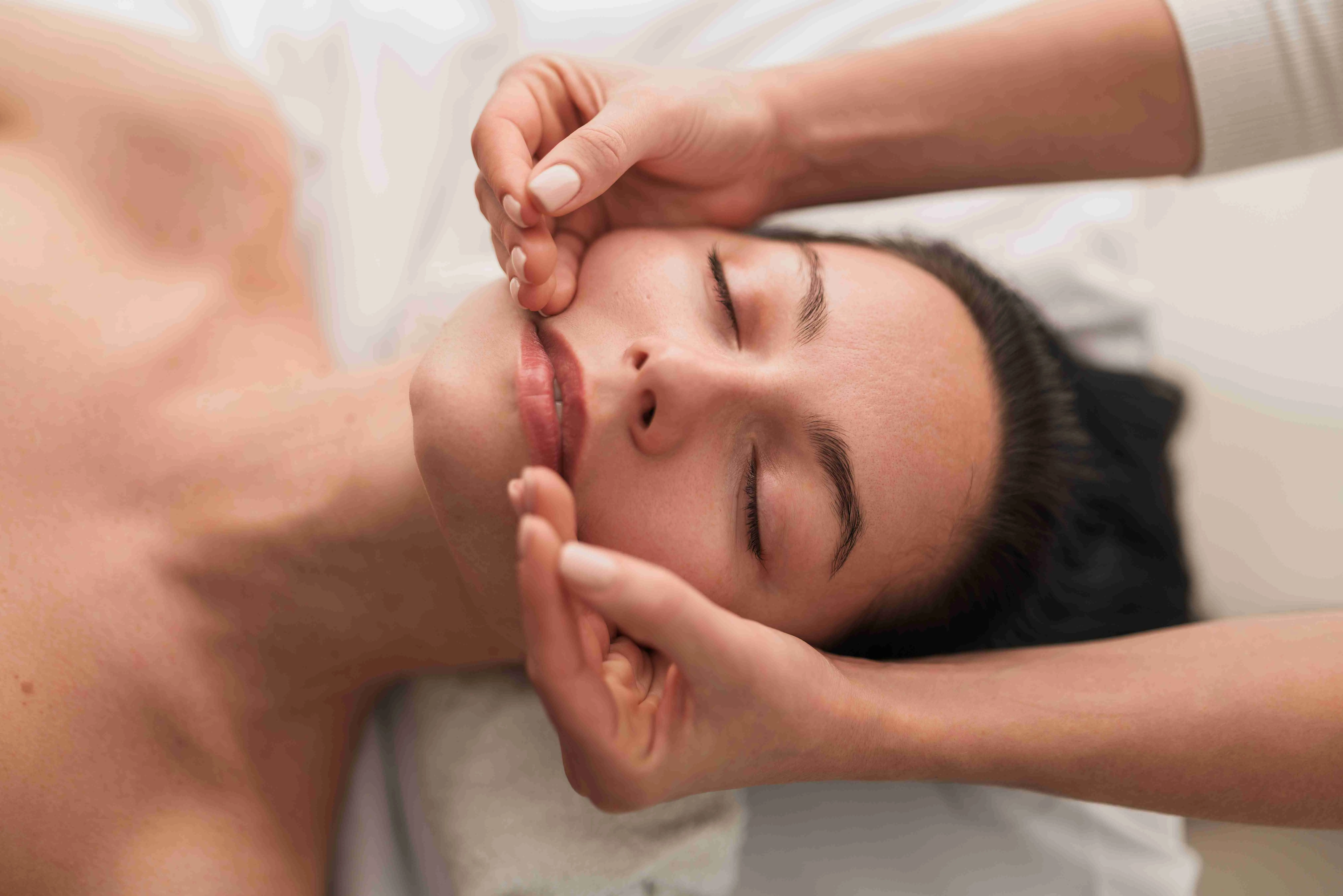When it comes to sleep disorders, sleep apnea is one of the most common ones, as many people around the globe suffer from its symptoms, which disrupt their sleep and negatively affect the quality of their life, especially sleep apnea can lead to a variety of health problems if left untreated.
What is Sleep Apnea?

Sleep apnea definition is pauses in breathing or shallow breaths during sleep. These pauses can last from a few seconds to minutes and can occur multiple times throughout the night.
Types of Sleep Apnea
There are three main types of sleep apnea: obstructive sleep apnea (OSA), central sleep apnea (CSA), and complex sleep apnea syndrome (CSAS). Each type of sleep apnea has its symptoms, causes, and treatment.
Obstructive Sleep Apnea
Obstructive sleep apnea (OSA) is the most common type of sleep apnea. It occurs when the muscles in the back of the throat fail to keep the airway open, leading to repeated episodes of blocked airflow during sleep.
This can lead to loud snoring, gasping, or choking during sleep, as well as excessive daytime sleepiness. OSA is often associated with risk factors such as obesity, smoking, and alcohol consumption.
Central Sleep Apnea
Central sleep apnea (CSA) is less common than OSA and occurs when the brain fails to send proper signals to the muscles that control breathing. A physical blockage of the airway does not cause CSA, unlike OSA. Instead, it is often associated with underlying medical conditions such as heart failure, stroke, or brainstem injury.
People with CSA may experience episodes of paused or irregular breathing during sleep, along with symptoms such as shortness of breath upon awakening and difficulty staying asleep.
Complex Sleep Apnea Syndrome
Complex sleep apnea syndrome (CSAS), also known as treatment-emergent central sleep apnea, is a combination of both obstructive and central sleep apnea. It occurs when a person with OSA is treated with a CPAP device and develops central sleep apnea as a result.
CSAS can be challenging to diagnose and treat because it involves both obstructive and central components. Treatment for CSAS may involve adjusting the settings on the CPAP device or using a different type of therapy altogether.
What causes sleep apnea?

There are several causes of sleep apnea, and there are many factors that are closely associated with this condition, such as obesity, old age, smoking, and other factors, and it’s essential to be aware of them to be able to deal with it early and prevent symptoms of sleep apnea from being exasperated.
Obesity
One of the key causes of sleep apnea is obesity. Excess weight can lead to the accumulation of fat around the neck and throat, which can obstruct the airway and result in disrupted breathing patterns during sleep.
Older Age
Old age is another significant factor that increases the risk of developing sleep apnea. As individuals age, the muscles in the throat and tongue tend to weaken, making them more prone to airway blockages during sleep.
Family History
Family history plays a role in the development of sleep apnea, as individuals with relatives who have sleep apnea are more likely to develop the condition themselves, which suggests a genetic component to sleep apnea.
Smoking
The chemicals found in cigarettes can irritate and inflame the upper airway, leading to swelling and narrowing of the air passages. This can result in breathing difficulties during sleep, contributing to the development or worsening of sleep apnea.
Nasal Congestion
When the nasal passages are blocked or narrowed, it becomes more challenging to breathe through the nose, forcing individuals to rely on mouth breathing. This can disrupt normal breathing patterns and increase the likelihood of experiencing sleep apnea episodes.
Type 2 Diabetes
Type 2 diabetes is a metabolic disorder that affects the body's ability to regulate blood sugar levels. It has been found that individuals with type 2 diabetes are at a higher risk of developing sleep apnea. The exact reason behind this association is not fully understood, but it is believed that the underlying inflammation and insulin resistance in diabetes plays a role in the development of sleep apnea.
High Blood Pressure
During episodes of sleep apnea, oxygen levels in the body can drop, causing the blood vessels to constrict and leading to an increase in blood pressure. Over time, this recurring pattern can result in chronic high blood pressure.
Conversely, individuals with high blood pressure may have narrowed blood vessels, making them more susceptible to the airway blockages that occur during sleep apnea.
Medical Conditions
Certain medical conditions, such as allergies and enlarged tonsils or adenoids, can also cause sleep apnea. It is important to address these underlying medical conditions to effectively treat sleep apnea and improve overall quality of life.
Symptoms of Sleep Apnea
Symptoms of sleep apnea can vary depending on many factors, such as which type of sleep apnea you’re suffering from, and while there are some similar symptoms of both obstructive sleep apnea and central sleep apnea, there are also very different symptoms for each type, which is crucial to recognize to identify which type of sleep apnea we are suffering from and how to properly treat it.
Symptoms of Obstructive Sleep Apnea
- Daytime Sleepiness: People with OSA often feel excessively tired during the day, despite getting what they believe to be a full night's sleep. This is because the frequent interruptions in breathing prevent them from entering into the deep, restorative stages of sleep. Consequently, they wake up feeling unrefreshed and struggle to stay awake throughout the day.
- Morning Headaches: Morning headaches are one of the side effects of sleep apnea. These headaches are often described as dull and throbbing and are typically located in the front or sides of the head. They can be quite debilitating and can significantly impact a person's ability to start their day off on the right foot. Due to repeated airway obstructions during sleep, morning headaches are a result of the decrease in oxygen levels.
- Loud Snoring: Loud and persistent snoring can be indicative of a more serious underlying condition, such as OSA. Snoring occurs when the flow of air through the mouth and nose is partially blocked during sleep. In people with OSA, this blockage is more severe and can result in snorting or gasping sounds as they struggle to breathe.
- Dry Mouth: One of the most noticeable symptoms of OSA is dry mouth upon waking up. This occurs due to the decreased airflow, which can cause the mouth to open during sleep, resulting in dryness. Individuals with OSA may also experience a sore throat or a feeling of thirst upon waking.
- Frequent Wake-ups During the Night: As the person tries to resume normal breathing after these awakenings, gasping or choking noises frequently accompany them. These interruptions in sleep can lead to excessive daytime sleepiness, lack of concentration, and disrupt your circadian rhythm. It is significant to note that while the individual may not remember these wake-ups, they can have a big impact on how well they sleep.
- Reduced Focus: People with sleep apnea may have numerous episodes of paused or shallow breathing throughout the night, which frequently results in interrupted sleep. As a result, they may wake up feeling tired and groggy, making it difficult to stay alert and focused during the day.
Symptoms of Central Sleep Apnea
- Abnormal Breathing Patterns: Individuals with this condition may experience periods of shallow or irregular breathing, or they may even stop breathing altogether for short periods. These pauses in breathing can be brief or may last for several seconds, and they can occur multiple times throughout the night.
- Daytime Sleepiness: Because the interruptions in breathing during the night disrupt the normal sleep cycle, individuals with central sleep apnea may struggle to stay awake during the day, even after a full night's sleep. This excessive daytime sleepiness can have a significant impact on daily functioning, making it difficult to concentrate, perform tasks, or engage in activities.
- Nighttime Awakenings: People with this condition may find themselves waking up multiple times throughout the night, often gasping for air or feeling short of breath. These frequent awakenings can disrupt the natural sleep cycle and lead to feelings of exhaustion and tiredness during the day.
- Chest Pains: People with central sleep apnea frequently describe their chest pain as a dull ache or pressure in the chest. Shortness of breath or a feeling of tightness may accompany it. It is important to note that chest pain can also be a symptom of other serious medical conditions, so it is essential to seek medical attention if experiencing this symptom.
- Decreased Focus: People with this condition often struggle to stay alert and focused throughout the day due to disrupted sleep patterns. This can affect their ability to perform well at work or school and may lead to a decrease in productivity. Additionally, the lack of quality sleep can impair memory and cognitive function, making it difficult to retain information or make decisions.
- Morning headaches: As explained before, the frequent pauses in breathing during sleep can cause oxygen levels in the body to drop, which can trigger headaches upon waking up. These headaches are often described as dull and throbbing and may persist throughout the day.
Treatments of Sleep Apnea

While sleep apnea can have a negative impact on many people’s lives, there are various treatment options available for individuals suffering from sleep apnea, however, It is essential to consult with a healthcare provider to determine the most suitable treatment approach based on their specific condition and needs.
PAP therapy
- Continuous Positive Airway Pressure (CPAP): CPAP is a sleep apnea machine that delivers a constant, steady stream of pressurized air to the airway, keeping it open throughout the night. This helps to eliminate or reduce the episodes of interrupted breathing that occur with sleep apnea. CPAP machines are typically set to an individual's prescribed pressure level, which is determined during a sleep study or titration study.
- Bi-Level Positive Airway Pressure (BiPAP): BiPAP machines differ from CPAP machines in that they deliver two levels of pressure: a higher pressure during inhalation and a lower pressure during exhalation. For those who struggle to breathe out despite the constant pressure a CPAP machine delivers, this can be helpful.
- Auto-Titrating Positive Airway Pressure (APAP): APAP machines continuously monitor and adjust the pressure delivered based on an individual's breathing patterns throughout the night. This allows for personalized and optimal pressure settings, as it can automatically adapt to changes in airway resistance and other factors that may affect breathing during sleep.
Surgery
Surgery may be recommended for individuals with severe cases of sleep apnea or for those who do not respond to other treatments, and different types of surgical procedures can be performed to address sleep apnea.
Lifestyle Modification
Some lifestyle modifications can be a treatment for sleep apnea. These modifications include maintaining a healthy weight, avoiding smoking, and adopting a regular sleep schedule. Excess weight can contribute to the development or worsening of sleep apnea, so losing weight can help reduce symptoms.
Check how to Create the Ideal Bedtime Routine.
Exercise
Exercise is beneficial for individuals with sleep apnea. Regular physical activity can help improve overall cardiovascular health and strengthen respiratory muscles, which can reduce the severity of sleep apnea symptoms.
Engaging in activities such as walking, swimming, or cycling for at least 30 minutes a day can have positive effects on sleep quality and respiratory function.
Check the Best Exercises for Better Sleep.
Altering Sleep Positions
Changing sleep positions can help to keep the airway open and reduce the severity of apnea episodes. For example, sleeping on the side instead of on the back can prevent the tongue from blocking the airway. This can be achieved by using pillows or other devices to encourage side sleeping.
Check out Which sleeping position is the best.
Reducing Alcohol Consumption
Alcohol relaxes the muscles in the throat, which can lead to an increased risk of airway obstruction during sleep. Limiting or avoiding alcohol intake, especially before bedtime, can help prevent episodes of interrupted breathing and improve overall sleep quality for individuals with sleep apnea.
What happens if you don't treat sleep apnea?
Sleep apnea is a serious condition that affects the lives of so many people, and if left untreated, it might even pose a greater threat to our overall quality of life.
Cardiovascular Risks
One of the most concerning complications of severe sleep apnea is the increased risk of cardiovascular diseases. Sleep apnea causes repeated interruptions in breathing during sleep, leading to low oxygen levels in the blood.
This can put a strain on the heart and increase the risk of conditions such as high blood pressure, heart attack, and stroke.
Metabolic and Cognitive Effects
Sleep apnea has been linked to insulin resistance and glucose intolerance, which can contribute to the development of type 2 diabetes. The disrupted sleep patterns associated with sleep apnea can also affect hormones that regulate appetite and metabolism, leading to weight gain and difficulty in losing weight.
Furthermore, untreated sleep apnea can have cognitive effects. The repeated awakenings throughout the night can result in fragmented sleep and daytime sleepiness. This can impact cognitive function, leading to difficulties with concentration, memory, and problem-solving.
Quality of Life
Untreated sleep apnea can have significant complications that can greatly impact an individual's quality of life. One of the most common complications is excessive daytime sleepiness, which can lead to decreased productivity and impaired cognitive function.
FAQs
Is sleep apnea dangerous for kids?
Children with sleep apnea often feel tired and lethargic during the day. This can affect their ability to concentrate and perform well in school. Additionally, sleep apnea in children can lead to behavioral problems such as irritability, hyperactivity, and difficulty controlling emotions. It can also cause developmental delays and growth problems if left untreated.
Who does sleep apnea affect?
Sleep apnea is a sleep disorder that can affect individuals of all ages and genders. While it is more commonly seen in adults, it can also affect children. People who are overweight or obese are at a higher risk of developing sleep apnea, as excess weight can put pressure on the airway and lead to breathing difficulties during sleep.
How common is sleep apnea?
Sleep apnea is a common sleep disorder that affects a significant portion of the population. It is estimated that around 22 million Americans suffer from this condition, with many cases going undiagnosed.
How is sleep apnea diagnosed?
The diagnostic process typically involves a combination of medical history assessment, physical examination, and sleep studies. During the medical history assessment, the patient's symptoms and overall health are discussed to identify any potential risk factors for sleep apnea. The physical examination may involve examining the nose, mouth, and throat to check for any physical abnormalities that could contribute to the condition.
Conclusion
Sleep apnea is a prevalent sleep disorder that can have significant impacts on an individual's overall health and well-being. It is important to recognize the symptoms and seek proper diagnosis and treatment from a healthcare professional. Lifestyle changes such as weight loss, regular exercise, and avoiding alcohol and sedatives before bed can help alleviate symptoms.
Additionally, the use of continuous positive airway pressure (CPAP) machines and oral appliances may be recommended for more severe cases. By addressing sleep apnea and improving sleep quality, individuals can experience improved daytime functioning and reduce their risk of associated health problems.
Dom Abraham
As the lead content writer at Sleepiverse. Dom pours his heart into writing mattress reviews, bedding product reviews, and medically-reviewed health articles. Dom is from Portugal and likes to spend his free time writing on the beach as it gives him a sense of comfort. Aside from writing mattress reviews in front of the soothing beach view, Dom likes to experiment with new amazing food ideas.


